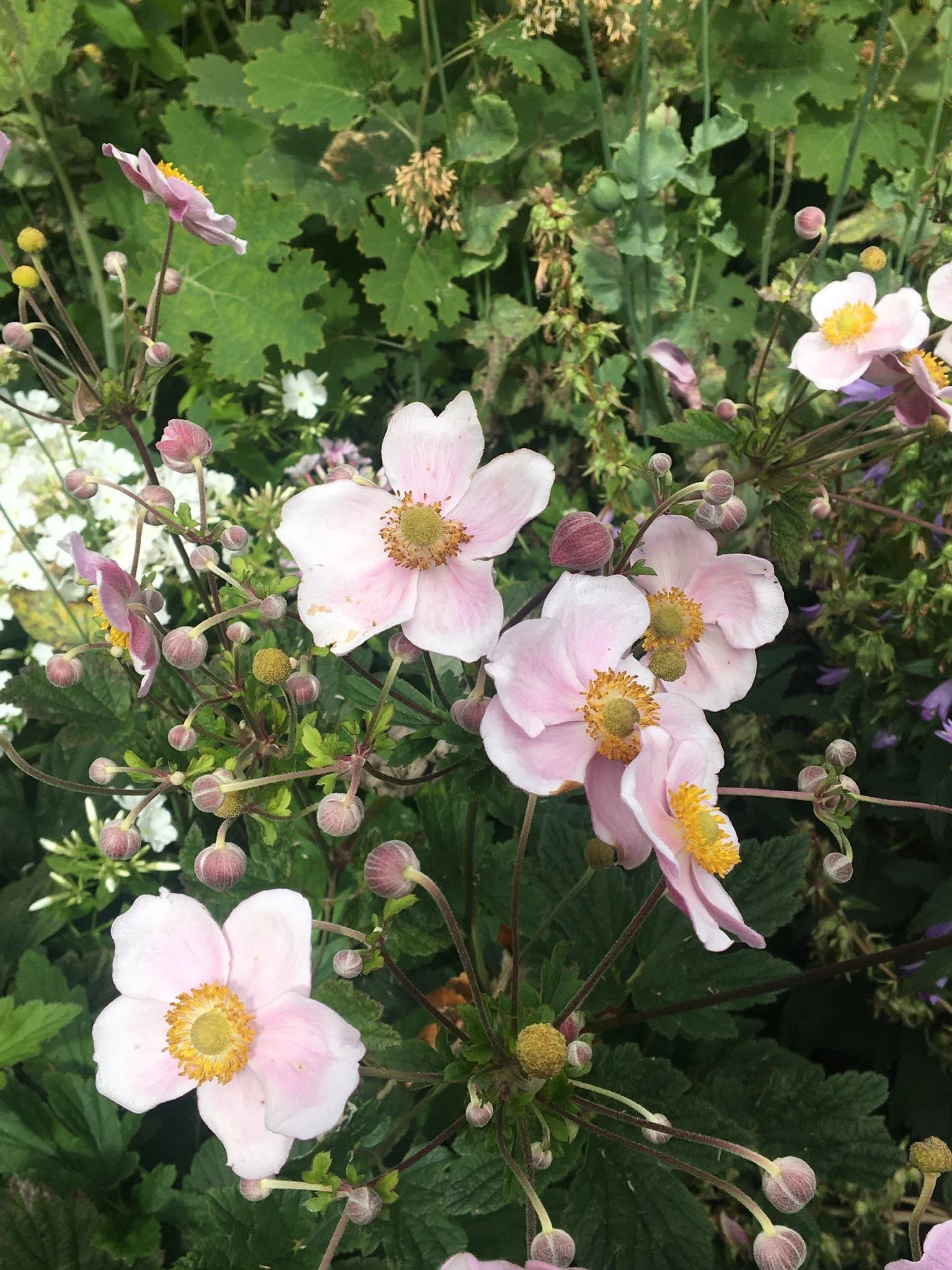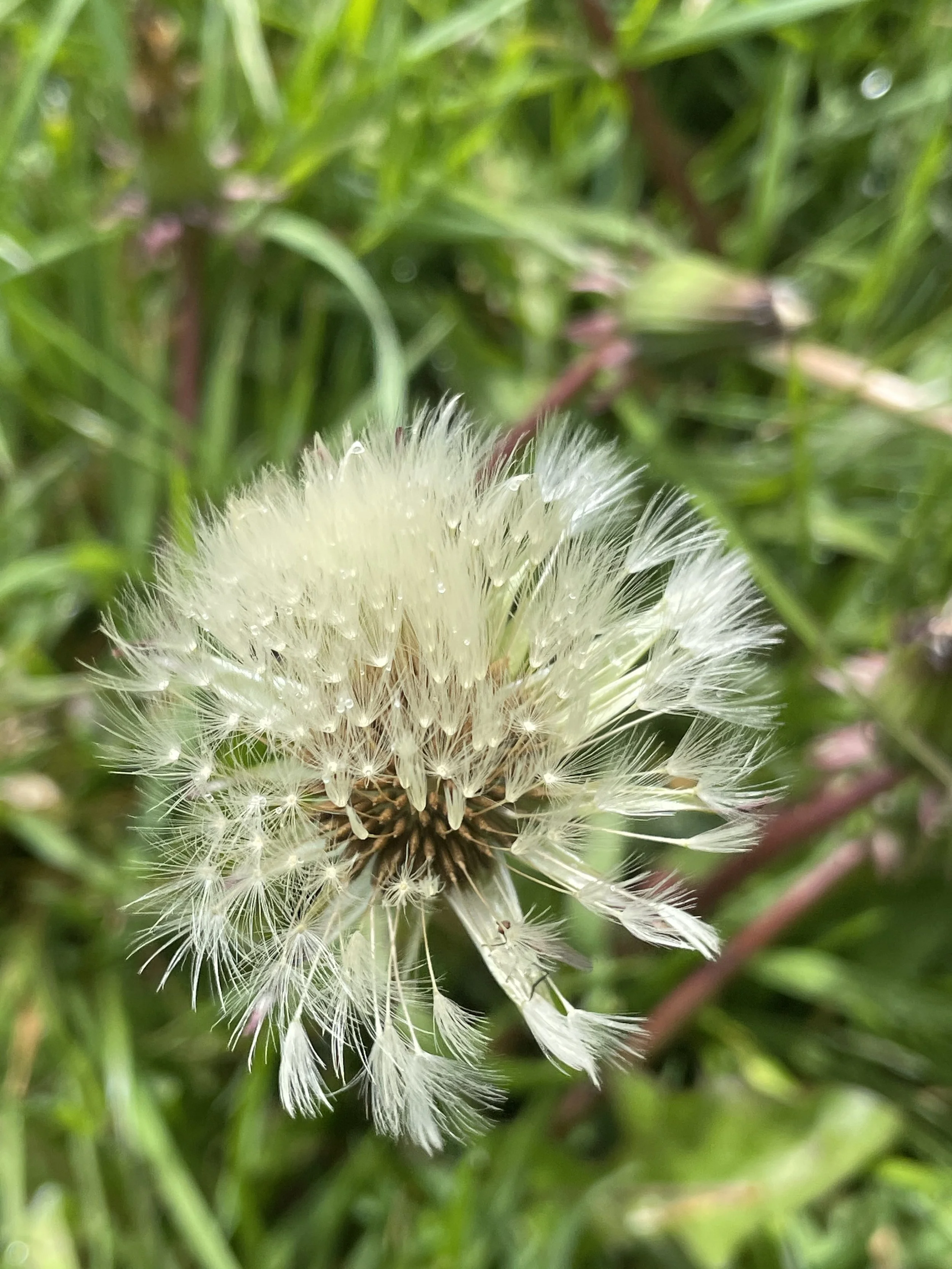bloomin’ terrific irish WILDFLOWERS
By Ailbhe Doyle
Our countryside is home to so many special plants. In my opinion, they are unsung heroes for their medicinal functions, flavours, and just general beauty, and we should be using and even growing them a lot more than we currently do. There are so many to mention, but I will stick to the five most underrated, common plants. Hedgerow plants: Meadowsweet, Nettles and Brambles and Ditch plants: Buttercups and Dandelions.
Meadowsweet (airgead luachra) is one of the more commonly used Irish wildflowers in delights like delicious cordials in summer and their delicate appearance and beautiful smell when you pass them (although they actually don’t produce any nectar, the smell tricks pollinators into pollinating them). It also has high concentrates of salicylic acid, a disinfectant, which explains the spot eliminating function. When the salicylic acid is isolated from the meadowsweet, first achieved in the nineteenth century, it also reveals anti-inflammatory and painkilling functions. Fun fact: after removing its harshness for the stomach, the acid became was sold in tablet form as aspirin. Aspirin as in 'a' for acetyl and –spirin for Spirea, the original botanical name for Meadowsweet!
Nettles (neantóg) have a bad rep., but they have many traits than hurting people for a laugh. They are great wildlife attractors, producing seeds that the birds love, giving themselves up for small tortoiseshell caterpillars and peacock butterflies that eat them, and housing aphids that feed the ladybirds. We know the common nettle, the one that stings like a b*tch that the doc leaf sorts out in under a few minutes. According to our folklore, if these bad boys are boiled, the strained water can be used to cure ailments such as worms and oedema. It is also said to help with arthritis, but that involves lying on a bed scattered with nettles, so maybe not the best of ideas. People also forget about the more elegant looking fen nettle, which is usually non-stinging! It is easily distinguished from the stinging common nettle with its tall stem and long, thin leaves.
The buttercup (fearbhán féir) also has medicinal functions, in addition to determining whether someone likes butter. Chinning a buttercup is always an enjoyable time, but they can also be put to even better use, like curing toothaches. There are five varieties native to Ireland, all of which settle in our fields and gardens; bulbous, celery leaved, creeping, goldilocks, and meadow. The aptly named celery leaved buttercup leaves look like celery, and I can confirm make a great addition to a childhood ‘wild soup’. The sap, however, can cause blistering on the human skin, especially after sun exposure. These celery leaved buttercups are usually found in marsh land. The meadow buttercup has a very delicate, smaller flower head compared to the other four. We shouldn’t let the delicate façade deceive us because this is also a poisonous variety, but only if eaten, so I think (most of us) are safe.
There are two native dandelion (caisearbhain) varieties in our gardens. The dandelion is really important for birds and early flying insects in spring. They also have very useful herbal functions. The leaves of the dandelion should be picked and dried. Once they have completely dried they can be used like tea, leaving them to draw in boiling water for ten minutes. This water should be cooled before drinking, but it can help with feeling run down and even problems with consumption. The recommended dosage is one full cup before breakfast every morning, what a treat! The milky substance secreted form the stem is also a cure for warts when its rubbed on the affected area. A juiced dandelion can cure a wart in under ten days, which is pretty cool. The turlough variety of the dandelion grows in limestone areas, like the Burren. It flowers from April to June which is when you will see the curling oxblood stem and narrow, smooth leaves carry a slightly more delicate flowering head.
Brambles, or briars (dris) are seen as a prickly inconvenience in most cases, but for us, their fruit are a good source of Vitamin C also providing substantial ingredients for a day of jams, cordials, and tarts. For wildlife, they also provide a good source of nutrition, as well as a safe home plan, due to the abundance of thorns, so you might find a little hedgehog, dormouse or finch having a snooze within them. Briars also produce a vital nectar for speckled wood butterflies and brimstone butterflies.
These special plants aren’t bothering anyone, sitting back, playing a key in preserving our ecological diversity. They are the ones being affected the most by our unconventional human activities like intensive farming and urbanisation. So, one small step to saving them is realising and understanding how valuable they are, and starting to appreciate them again in our culture, kitchens, and cures.


